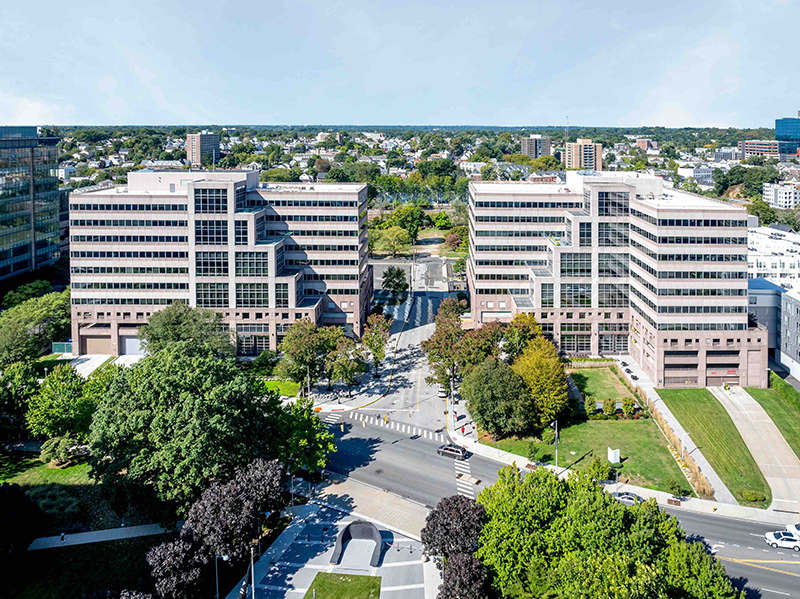News:
Connecticut
Posted: August 5, 2010
How has the national economy translated, at a state level, for Conn. residents and businesses?
The 2007-2009 recession was the nation's most severe economic downturn since the 1930s. From peak to trough, output contracted 3.7% and employment dropped 6.1% (8.4 million jobs).
Based on the available data, it appears that Connecticut's output decline was equivalent to the nation's. And the state's loss of 103,400 jobs was proportionally identical to that of the U.S. as a whole.
Since bottoming a year ago, the national economy has grown steadily, but slowly in comparison to previous recoveries. Data through May suggest that U.S. Gross Domestic Product (GDP), the total output of goods and services, has already surpassed its pre-recession level, but U.S. employment is still 5.4% below its prior peak.
Connecticut's economy appears to have bottomed in the summer of last year, with conditions first stabilizing and then turning modestly expansive. This is evident in the index of coincident indicators which, since last July, has risen in Connecticut at about the same rate as the nation as a whole.
From July through March, inflation-adjusted GDP grew 2.6% nationally. Although we do not have state GDP data beyond 2008, the coincident indicators and other measures suggest that the state's rebound has followed a similar, perhaps somewhat slower, course.
In the U.S., the consumer drives the economy. Slightly more than 70% of GDP is dependent on demand for goods and services emanating from the household sector. When personal incomes decline, therefore, the general economy suffers.
Between the third quarters of 2008 and 2009, Connecticut's personal income fell by 3.7%. The impact on consumer spending was evident in an 8% drop in sales tax revenues (based on a moving average to smooth monthly volatility).
In the following quarters, though, personal income recovered much (but not all) of the 2008-2009 decline. Accordingly, sales tax revenue (a proxy for consumer spending) stabilized at the beginning of 2010 but has yet to increase.
Similarly, employment, a key to nonresidential real estate recovery, stabilized in Connecticut at the end of last year and, during the first half of 2010, rose by 13,500 jobs. While the absolute gain may not seem large, the six consecutive monthly increases in 2010 were more than all of the monthly upticks recorded during 2008 and 2009.
This year's jobs gains have been concentrated in the private services sectors (notably, business services, health and education, and leisure/hospitality). Public sector employment accounted for one sixth of the increase, largely in temporary jobs relating to the 2010 Census.
The recovery to date has been job-lite rather than jobless. In part, this reflects caution among employers who remain tentative about the pace and durability of the expansion. In part, it reflects the substantial rise in underemployment (i.e., workers on reduced hours) during the recession. So as demand has picked up, employers have increased hours for the underemployed before hiring new workers.
The combination of more jobs and hours since the beginning of 2010 has stabilized workers' earnings, the largest component of household income. From the beginning of the financial panic in September 2008 through the end of 2009, earned income in Connecticut dropped by 6.2%. In the first quarter of 2010, however, wage and salary earnings rose a bit, suggesting that incomes have finally turned the corner.
If so, rising household incomes should bolster consumer spending, with benefits for retail and commercial space.
Cumulatively, these data suggest that Connecticut's economy has stabilized and is recovering from a severe contraction, but the pace of growth remains tepid.
Statewide, employment is still almost 90,000 less than at its peak in March 2008. Were growth to proceed at its current rate, recovery would take three years. But job creation should accelerate as the rebound proceeds.
As it does, vacancy rates in existing properties will decline gradually. But construction of new nonresidential buildings will remain subdued through 2011.
For all of its challenges, Connecticut is relatively well positioned for the rebound. Its human capital, location and wealth are all advantages. Having avoided the building frenzy of the past decade, the stress in its real estate markets should dissipate by early 2012 as the economy continues to expand and employment continues to rise.
The recent recession and credit crisis disrupted the American economy more severely than any downturn since the 1930s. So recovery will take longer and demand more from management. But now, at least, things are headed in the right direction.
Patrick O'Keefe is director of economic research at J.H. Cohn LLP, Glastonbury, Conn.
Tags:
Connecticut
MORE FROM Connecticut
CBRE brokers sale of Stamford Towers - 326,468 s/f Class A office
Stamford, CT The CBRE team of Jeff Dunne, Steve Bardsley, and Travis Langer, in collaboration with David Block, completed the sale of Stamford Towers, located at 680 & 750 Washington Blvd. CBRE represented the seller, CBRE Investment Management, and procured the buyer, a joint venture of Lamar Companies

Quick Hits










.png)